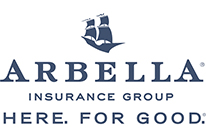You need to first get your taxes, paperwork, and legalities in order before you can even begin to consider whether you like a property or not. Only then can you start asking, "Is it big enough?", "Is the location right for me?", "Will it require any repairs?", "How much will it cost to maintain?", and so on. The questions could go on endlessly.
But there is one question you should never forget to ask: "What kind of insurance am I going to get?"
It might seem strange to contemplate your house's destruction or damage when buying it for the first time, yet it plays a huge role in the expenses that come with owning a house. Insurance premiums can eat into a household budget over the years – something that can be avoided if given careful consideration beforehand.

To qualify for the best home insurance policy available, it is essential to know what insurance companies are looking for when evaluating a property. It is not just about insurance, it will make you a savvier buyer too. Knowing what questions to ask about the condition of a house, such as its plumbing, heating, and construction from roof to walls, can save you hundreds and thousands in the long run. Plus, you will end up living in a sturdier and higher-quality home.
In this guide, we discuss the critical aspects of buying a home with insurance in mind, as well as the factors that will render a property ineligible for the most preferable home insurance programs.
There is a lot of information to consider, so before we get into all the details, we have condensed the most salient points into this quick summary.

Although roofs form an expensive part of a house, oftentimes people give it far too little thought when choosing their new home. However, there are several key things to keep in mind.
First, when buying a house, the roof should have a life expectancy of at least 5 years.
Second, buyers should familiarize themselves with different roof designs, such as gable, hip, mansard, gambrel, and flat, and roofing materials. Certain roof styles, such as hip roofs, can get you a discount, while the quality of roofing material will determine how soon a roof needs to be replaced.
On average, electric systems cause 34,000 home structure fires annually. Therefore, it is essential to understand the age and quality of the circuit breakers, wiring, and light fixtures. E.g., if the electrical system is older than 50 years, then you might want to replace it.
Additionally, certain elements, such as aluminum wiring or Stab-Lok circuit breakers, will automatically leave you ineligible for the best insurance policies.
Heating systems have a huge impact on the value of a house. Understanding the differences between central heating, where a furnace or boiler heats air or water, respectively, and distributes it throughout the house, and a direct heat source, such as a stove or floor furnace, will help you save money over time.
The wear and tear of a heating system is typically not covered by home insurance. Thus, the age and state of a heating system might determine whether you should invest in a particular property.
Home insurance will not cover a property’s plumbing for long-term leaks, negligence, old plumbing, or sump pump flooding. Knowing the age of the plumbing system, the piping material, and the general quality are vital to assessing whether a property might incur large expenses or is instead a sound investment.
For properties older than 30 years, insurance premiums can increase by 1% for every extra 5 to 10 years. It probably goes without saying that buying a newer property will save you money.
Additionally, you should also think about the construction materials. Wooden frame houses can impose a fire risk, whereas masonry is more robust and durable. Hence, wooden frame properties cost more to insure than masonry.
Houses closer to a fire station or fire hydrant are more likely to qualify for the best home insurance policies, whereas homes at risk of natural disasters are going to need more expensive insurance.
Houses near cliffs, major bodies of water, and on mountainsides will be ineligible for the best policies.
For more information, continue reading the full guide. Average reading time: 16-17 minutes.

It is essential to understand the two most important questions insurers ask themselves when reviewing a home:
These two questions are vital to understanding how insurers think. Essentially, they are looking to spend as little as possible and want the home to be in as good condition as possible, relative to the price of the house as a whole.
A lot of people do not inspect the roof or siding of a house when they start looking for a new home, yet the roof is one of the most expensive parts of a house. Roofs should be in a good condition and have at least a 5-year life expectancy. If your heart is set on a particular property, it is sensible to arrange an inspection of the property, including the roof, to avoid any bad surprises down the line.
Roof designs differ depending on the location, with higher-pitched roofs being more common in areas with high levels of rain or snow. Meanwhile, flatter roofs are more common in drier environments. Here are the most common roofing types:
Related insurance: exterior home insurance inspection
Houses with a hip roof covering the entire structure may be eligible for a discount of up to 10% off the insurance policy, as the design has an increased ability to withstand high winds. However, hip roof houses with skylights or overhangs might not be eligible for the most preferable policies.
The material of a roof is significant, as depending on the material, the roof may need to be replaced. Here are the most common forms of roofing material (as well as average life expectancy):
The following roof types are ineligible for the preferred homeowners’ programs: wood shingle, wood shake, tar and gravel, rubber membrane, tin, and corrugated metal roofs, and flat roofs (unless made of poured concrete).
Inquire about any asbestos on the property, as removal is exceedingly expensive due to the carcinogenic properties. As such, asbestos is not eligible for coverage, either as a roof or siding. Masonite, EIFS (exterior insulation finishing system), and Dryvit (a synthetic version of cement siding) sidings are also ineligible for the preferred homeowners’ programs.
Additionally, roofs made from non-combustible materials are naturally considered to be a superior construction. In areas prone to wildfire, this is especially important to consider.
The newer the roof, the better. If the roof is old, you may want to negotiate the price of the house down to compensate for the additional cost. For many insurers, composite shingle roofs must be no more than 20 years old, and for metal and concrete and clay tile roofs, they must not be older than 25 years.
If the house you are set on has an old roof, you will need to decide how long you plan to live in the property, and whether the cost of a new roof is worth the investment. If the inspector tells you that there are only a few shingles missing or are curling/buckling, then it may be worth spending the money. However, if the roof is sagging due to structural damage or significant leakage, it may not be worth the investment.
Finally, if a tree is overhanging the roof or is deemed to be in dangerous proximity, the house may be ineligible for the preferred homeowners’ programs. Consider trimming back tree branches if possible.

Whenever you buy a new property, it is crucial to get the specifications of the electrical system irrespective of age. When was it installed? When was it last inspected? Have there been any previous issues? These are all vital questions to ask. Especially considering old wiring is a significant fire risk. According to the US Fire Administration, around 34,000 home structures catch fire annually due to electrical distribution and lighting fittings, which cost a whopping $1.4 billion in direct property damage.
As with all aspects of home insurance, the older the electrical system, the more you are likely to pay in insurance premium. Here are some specific elements of a house's electrical system to ask about:
In regards to wiring, knob and tube wiring (K&T) – a method of wiring used from around 1880 to the 1930s – and aluminum wiring that has not been adequately modified are ineligible for the best home insurance policies and should be considered red flags. Federal Pacific Electric (FPE) panels with Stab-Lok circuit breakers – which were commonly used in homes built between 1950 and 1990 – are also ineligible. Tests performed since the 1980s found that one in four Stab-Lok breakers were defective and would not trip off properly. Fuses are also ineligible for the best homeowners’ programs.
Additionally, homes more than 50 years old will require the replacement of the entire electrical system to be eligible for coverage unless it has been replaced not that long ago.
Heating is a crucial element of a building. The different types of heating systems and their relative cost also affect your insurance differently. You need to know the heating system's age and whether any updates have been made in the past decade to accurately estimate its impact on the cost of insurance.
The majority of North American households still rely upon a central furnace to provide heat. The furnace works by blowing heated air through ducts to provide the rooms with warm air. The furnace can be either oil- or gas-fired, though some forced warm-air systems also use electric heaters.
In regards to furnaces, most insurers do not cover normal wear and tear, while damage due to fire, theft, or natural disasters is covered. Make sure you find out the age of the furnace and its general condition before purchasing the house.
Make sure to also ask whether there is an underground fuel tank, as these can render the property ineligible for the best coverage available, irrespective of whether the fuel tank is in use.

If furnaces heat air, then boilers heat water. The warm water is then distributed through the house's rooms via radiators, which disseminate the heat. The cooled water is returned to the boiler for reheating. Boilers can be fuelled by either oil or gas, and use a pump to circulate the hot water.
Typically, boilers are not covered by home insurance, so you need to buy specific boiler insurance that can be purchased. If the boiler is older than 15 years, then the boiler coverage options will be limited. Having your boiler break down in the depths of winter without the money for a new one is a situation no one wants to find themselves in, so boiler insurance could be a worthy investment.
Heat pumps have become increasingly popular. A ground source heat pump uses the differential between above-ground air temperature and subsurface soil temperature to aid in space heating or cooling, as well as water heating. Meanwhile, in some locations, geothermal energy can be directly accessed by driving pipes several hundred feet into the ground. These systems can circulate the water in a continuous circuit (closed-loop system), or the water can be dispersed back into the ground after it comes to the surface (open-loop system).
Since heat pumps are outdoors, they are susceptible to wind and storm damage. These are typically listed as peril on a homeowner's insurance policy and will be covered. Most units will last between 15 to 20 years, so find out the age and when it is going to be needing replacement. The insurance policy does not cover wear and tear, but you can buy specific heat pump insurance policies.
Many sources of direct heat will save you money on your annual heating cost. Some estimates predict a reduction of 20-40%, but direct heat sources can increase your risk of fire. Generally, a fire caused by alternative heating sources is covered by home insurance, as fire counts as a covered peril.
Wall-mounted, free-standing, or floor furnaces can be used to provide a direct source of heat, as opposed to heating air and forcing it through the property. Generally, these devices are used for heating a single room.
These heaters are subject to similar policies as apply to central heating furnaces.
Portable "plug-in" electric heaters are cheap to buy but expensive to run. As a rule, insurers generally do not approve of electric space heaters due to the increase in fire risk.
Wood-burning stoves are permitted only if professionally installed and are used in conjunction with another primary source of heat. However, a wood-burning surcharge may be applied. On average, wood stoves increase home insurance rates by two percent. If a house has a wood-burning stove, installing smoke detectors and purchasing a fire extinguisher can reduce your insurance costs.
Radiant floor heat is a system of underfloor tubing circulating heated water through the house, thereby warming the room. The system is expensive to install but offers a high degree of control. Insurance companies will want to know the age of the unit used to heat the water. Also, while most insurers will cover damage from burst piping, they will want to know the system's age and prior maintenance.
Many policies probably will not cover burst or frozen pipes, especially if you have been away from the property for a prolonged period. However, as the system has a lifespan of over 100 years, it is unlikely that you are going to have to replace it.
As with electric systems, the newer the plumbing, or the more recently it has been upgraded, the less you will spend on home insurance. Make sure to ask about the water piping's age, whether there has been a history of leaks, and if there are any repairs currently required.
Plumbing damage repairs and expenses usually are covered by:
However, there are a few occasions when an insurance provider will deny your claim:
Additionally, homes with polybutylene, PEX, or galvanized plumbing systems are not eligible for the best programs. PEX systems installed post-2011 will be considered with underwriting approval. Also, homes older than 50 years require the replacement of pressurized lines to be eligible.

If the property has a swimming pool, hot tub, or spa, you will be eligible for coverage only if the facility is maintained and in working condition. Diving boards and slides are not permitted. Swimming pools must be protected by a locking fence at least four feet in height, or another suitable approved enclosure. Hot tubs must also be enclosed under similar rules, as well as possessing a secure cover.
You will also need additional liability coverage in case of injury. Currently, the Insurance Information Institute recommends all pool owners increase their liability to $300,000 or $500,000, increasing your annual home insurance bill by $50 and $75, respectively.
Some homeowners with swimming pools or other aquatic features undertake an umbrella policy, in which additional protection for injury and being sued are covered. A $1 million umbrella policy will increase the cost by $200 to $300 annually. Otherwise, pools will only increase policy costs by less than one percent, and so can be considered negligible. But it pays to have enough liability coverage.
Before discussing the specifics of construction, it should be noted that many homes with unconventional construction are not eligible for preferred homeowners’ insurance programs irrespective of the quality of the construction.
These include, but are not limited to:
First, you will want to know the age of the property. As a rule of thumb, insurers charge more for older homes, as the rebuilding costs will be greater following damage or destruction. For instance, plaster walls, stained glass, hardwood flooring, ornate moldings, etc. Therefore, insurers will increase annual policy costs accordingly.
On average, this is how much age can increase the cost of the policy:
Homes built post-2007 can incur a discount of up to 10% if they meet protection requirements and the current International Building Code.

Determining the construction materials of the exterior load-bearing walls is a relatively simple task. Here are some common insurance definitions:
The four classifications descend in order of superiority, as buildings made of non-combustible masonry materials do not succumb as easily to destruction.
Buildings, which are a combination of brick/block and frame construction, are considered frames when the frame construction exceeds thirty percent of the total exterior wall surface area. Otherwise, such walls are classified as brick/block.
It may seem like an irrelevant distinction, but on average, brick homes cost 6% less to insure. Homes at the top end of the scale, which are made entirely of non-combustible materials, save on average twelve percent. Meanwhile, according to insurance.com, newly-constructed homes see an average discount of thirty-six percent compared to other homes.
As with the Bible story, a house built on sand will not last, regardless of location. Insurers also use such simple principles in determining the viability of a house's foundation. For insurers to bind a policy, it requires:
Homes built on open foundations are ineligible for the best home insurance policies.
All damage to a house's foundation is covered by a policy unless explicitly excluded. As a rule, events that insurance companies reject include natural settling, cracking, or expansion of the foundation, earthquakes or flooding; pressure from tree roots; sinkholes; or faulty construction.
Having a structural engineer inspect the foundations can be useful if you are unsure about the viability of a house’s construction.
The type of building you choose to buy will not affect whether a policy will cover you, but it can determine which type of coverage you require. Therefore, it is vital to know the difference. Here is a breakdown of the different property types:
A single-family is defined as any building separate from others by space. Buildings separated by at least 6-inch reinforced concrete or 8-inch masonry walls - that pierce or rise to the underside of the roof and pierce or extend to the inner side of the exterior wall - can also be defined as a single building. If these buildings are classified as a single building, then entryways between buildings must be protected by a Class A Fire Door installed in a masonry wall.
Multi-family dwellings are defined for insurance purposes as dwellings capable of housing more than one family with multiple kitchens, bathrooms, and bedrooms with separating walls between them – are viewed differently than traditional family units. If you live on the property, a standard homeowner’s insurance policy is applicable. However, if you do not reside in the property, then a dwelling and fire policy (in addition to a business owner’s policy) are applicable.
For homeowners, the policy includes the structure, personal liability, and replacement of personal property. Whereas, dwelling and fire policy will only cover the structure. Some policies also cover personal liability, though this does not come as standard.
Additionally, the following homes are not eligible for coverage: 'Green Homes'; homes with historical designations; mobile, modular, manufactured and prefabricated homes; and homes with burglar bars on the windows without an inside release.
A townhouse or rowhouse refers to houses that are attached and do not meet the requirements outlined above for single buildings.
Policies often depend on the number of 'family units' within a 'Fire Division.' For example, if there were three single-family units joined together. Collectively, they would be considered a Fire Division. However, if a firewall separated the properties, then they would be regarded as separate Fire Divisions. The more family units in a Fire Division, the more risk is incurred by the insurance company.
When buying insurance for a townhouse, you often insure the interior of the dwelling, the structure, and the land it is built on. In contrast, in a condominium, you only insure the interior of the residence, as the association is responsible for insuring the structure.
Just as house prices are affected by location, so too are insurance policy costs.
The closer the property is to a fire station or fire hydrants, the lower the cost of your insurance. As a general rule, urban and suburban homes receive better fire protection ratings than rural properties. Usually, being within 5 miles of a fire station and less than 1,000 feet from a fire hydrant is considered desirable by insurance companies. Houses that do not fulfill these criteria should be located on a paved road and be visible to neighbors. On average, homes near a central fire station see a four percent discount.
Additionally, homes with polybutylene, PEX, or galvanized plumbing systems are not eligible for the best programs. PEX systems installed post-2011 will be considered with underwriting approval. Also, homes older than 50 years require the replacement of pressurized lines to be eligible.
Homes near a coastline or body of water are at risk of flooding; therefore, they are more expensive to insure than inland properties. Houses at risk of hurricanes may need a separate deductible or even a separate windstorm insurance policy.
As such, properties within 2500 feet of the coast or a major body of water are ineligible for preferable coverage. Homes within half a mile of the coast must be located above base flood elevation, according to FEMA. If a house is not considered at high risk of flooding, homeowners often still purchase flood insurance, as an estimated 25% of flood claims come from homes that are not at high risk.
Additionally, properties located on mountainsides, cliffs, bluffs, or over water (partially or entirely) are automatically ineligible for the best coverage on the market. Homes near landfill sites or geologically unstable areas cannot receive coverage, as well as houses on a farm or with farming exposure.

Properties located in a commercially zoned neighborhood or adjacent to a commercial property, as well as properties with more than five acres of land, will be referred to underwriting before approval. Meanwhile, properties in the name of any kind of business, including Limited Liability Corporation, Limited Partnership, Corporation, land trust, or estate, are ineligible for the best home insurances..
If you are purchasing a property as a seasonal or secondary residence, then coverage can still be purchased, though usually not with a standard home insurance policy. Vacant and unoccupied properties or those under construction/major renovation are not eligible for the homeowners’ program but may be eligible for a dwelling policy.
Seasonal residences are defined as being occupied by the owner for less than nine continuous months per year.
Certain breeds of dogs can render a property ineligible for the best home insurance coverage. These breeds can include Akitas, American Bulldogs, Bull Mastiffs, Beaucerons, Belgian Malinois, Caucasian Mountain Dogs, Chows, Doberman Pinschers, German Shepherds, Great Danes, Keeshonds, Pit Bulls, Rottweilers, Rhodesian Ridgebacks, Staffordshire Terriers, Wolf Hybrids, or any mix of these breeds. Dogs with a recorded history of biting will also render you ineligible for the best home insurance policies.
Some insurers decide on a case-by-case basis or require the homeowner to sign a liability waiver for dog bites.
Any exotic animals, farm, saddle, or hooved animals will also render a property ineligible for premium coverage.
As there is a significant correlation between prior claims made and additional future claims, then the type and number of previous claims can influence your insurance rating. An unacceptable prior loss history might include three or more reported claims within three years, or one or more liability claims within three years.
Put simply, the more claims you make, the more your premium increases. Additionally, insurance companies reserve the right to re-rate or non-renew a policy based upon claim activity.





